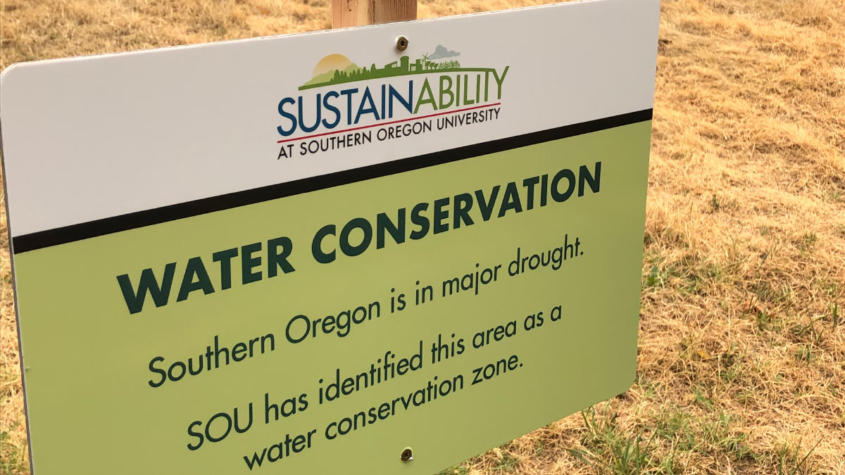SOU water conservation brings brown lawns, drought-tolerant plantings
Several areas of the usually lush 175-acre SOU campus have dried up this summer – intentionally, rather than through neglect. Those areas have been designated as water conservation areas in response to the region’s ongoing drought and the university is monitoring them for potential fire hazards.
Signs that identify many of the water conservation areas have been posted this month.
“Water resources are severely limited and several main properties on campus are now dry and brown,” said Zack Williams, SOU’s landscape supervisor. “We’re aware of this and are working closely with the city of Ashland Fire Department to remain in compliance with fire hazard reduction guidelines.”
SOU’s grounds have traditionally been irrigated with water from the Talent Irrigation District canal that runs across the hills south of campus. But several years of drought and low snowpack have dried up the reservoirs that supply the canal – Howard Prairie, Hyatt and Emigrant – and users of the irrigation water faced unprecedented restrictions this year.
The university’s sustainability, landscaping and facilities staff have inventoried various areas of campus and are balancing a reduction in water use with wildfire risks. A complicating factor is that a drought-related beetle infestation – which is affecting much of southern Oregon – is destroying dozens of trees on SOU property.
“Exacerbated by the drought, SOU has been battling a severe beetle infestation on several major stands of conifer trees on campus property,” Williams said. “Every effort is being made to save as many trees as possible.”
Several of SOU’s water conservation areas and vast expanses of lawn will be transitioned over the coming months and years to more drought-tolerant landscaping. New plantings are expected this fall and next spring.



